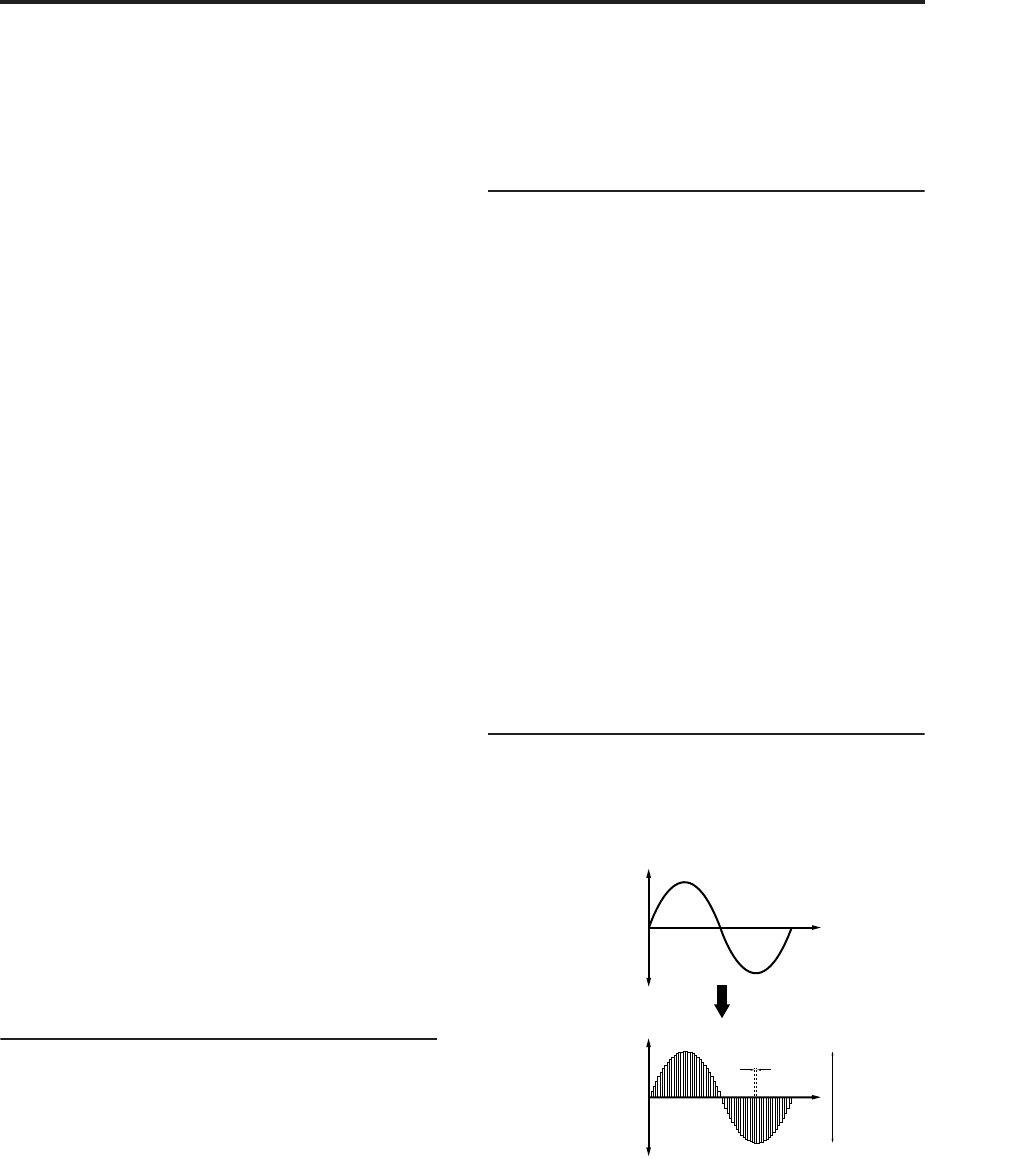
Sampling Overview Sampling features
565
loop sample (a looped pattern of drums etc.), and
divides it into separate rhythm instrument sounds.
A pattern corresponding to the divided samples is
created automatically, so that you can immediately
use the Sequencer mode RPPR function to play the
pattern and adjust the tempo without changing the
pitch. You can also do things such as adjusting the
pitch of only the snare, replacing it with a different
sample, or changing the playback timing on the
sequencer, in this way creating a new rhythm loop
based on the rhythm loop you started with. (Stereo
samples are supported.)
• The Time Stretch function lets you modify the
tempo without changing the pitch of a sample. You
can select either Sustaining (suitable for sustain-
type instruments such as strings or vocals), or Slice
(suitable for rhythm loops on decay-type
instruments such drums). Stereo samples are
supported.
• The Crossfade Loop function is an important
looping tool that helps smooth out irregularities in
long loops which contain complex material. By
executing Crossfade Loop, you can eliminate this
problem and create natural-sounding loops.
• The Link (with Crossfade) function allows you to
join two samples into a single sample. You can also
crossfade the overlapping portion of the samples at
this time, so that the volume changes gradually,
producing a natural-sounding transition.
• The BPM Adjust function (playback pitch adjust)
lets you adjust the playback pitch of each index so
that the loop frequency matches the desired BPM
value.
• You can use resampling (auto) to automatically
apply effects to a sample and create a new sample.
• A multisample you create can easily be converted
into a program (“Convert MS To Program”).
• In Sampling mode, the selected multisample or
sample will sound when you play the keyboard,
allowing you to hear the edited content of that
page.
Sampling in Program, Combination, and
Sequencer modes
• A performance in Program, Combination, or
Sequencer modes can be resampled internally, with
all audio remaining in digital form. This lets you
resample a performance that uses the OASYS’s
filters, effects, KARMA, and sequencer etc.
• External audio sources from the various input jacks
can be sampled. A performance played on the
OASYS can be mixed with the external audio
source and sampled, or you can sample just the
external audio source while monitoring the
performance played on the OASYS.
• In Sequencer mode when you sample an external
audio source while listening to the playback of the
song, note data will be automatically created in the
track. You can use this In-Track Sampling function
to sample vocals or guitar while the sequencer is
running.
• You can resample the Sequencer mode song
playback to the hard disk, use Disk mode to edit
the desired order of songs, and then use the
internal CD-R/RW drive or an external USB-
connected CD-R/RW drive to create an audio CD.
Note: Changing velocity on the keyboard
or pads
In Sampling mode, you cannot use keyboard or pad
velocity (with PAD MODE set to VELOCITY
SENSITIVE) to control the loudness of the sound.
However, you will be able to use velocity to control
effects if you select Velocity as a Dmod Source.
For example, you might make settings as follows.
Bus Select All OSC to: IFX1 (P8– Routing)
IFX1: 005: Stereo Limiter, On (P8– Insert FX)
Stereo Limiter:
Ratio 1.0:1
“Gain Adjust [dB]” -Inf
Source: Velocity or Exponential Velocity
“Amount” +40
If you are converting a user multisample into a
program for use in Program mode, you can raise the
P4: Amp/EQ– Amp1/2 Modulation “Velocity
Intensity” value as desired to control the sound.
Sampling frequency and bit resolution
As shown in the diagram, sampling reads the level of
the analog signal at fixed intervals along the time axis,
and stores the levels in memory as digital data.
The “fixed intervals” mentioned above are generally
expressed as the “sampling frequency.” 48 kHz
(kilohertz) means that sampling is performed 48,000
times each second, and that the interval is 1
(second)/48,000 (times) = approximately 0.00002083
(seconds) = approximately 0.02083 mS (millisecond).
The higher the sampling frequency is, the closer to the
original analog signal the waveform in memory will
be.
Each level is read, and converted into digital data. The
accuracy at this time is determined by the bit
resolution. This process converts an analog signal with
Sampled digital
waveform
Level
Time
Level
Time
Analog waveform
16bit
=65,536 levels
of data
48kHz
= 48,000 times every second
= 0.0208 mS cycle


















